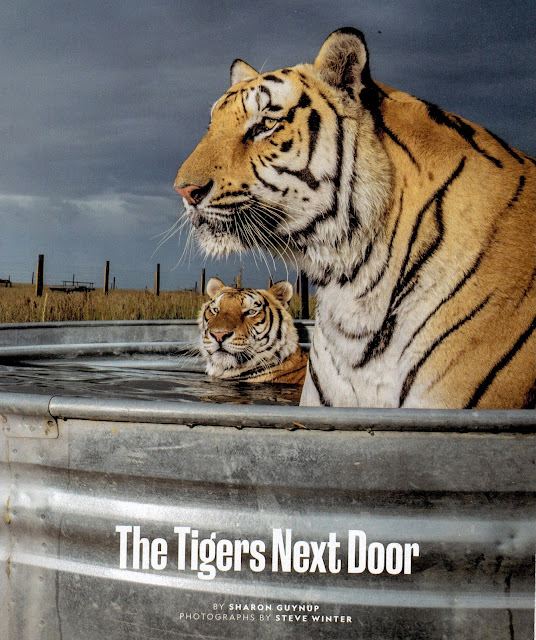Excerpts from an interesting article in the December 2019 issue of National Geographic:
My visit to the Ringling center with photographer Steve Winter was just one stop during a two-year investigation into why there are likely more tigers living in cages in the U.S. than remain in the wild... we found that most tigers in this country live in small zoos and animal attractions - known generally in the industry as "roadside" zoos - where care standards can vary widely, in some cases endangering the animals in them and the humans who visit them...You can get a USDA license to exhibit or breed gerbils - and then exhibit or breed any animal you want, including big cats...Tiger cubs are a gold mine, especially white ones... A quick photo op or five-minute cuddle runs $10 to $100. A three-hour zoo tour with cub handling can run $700 a person. Guests often are told they're helping to save wild tigers. They leave happy and post selfies on social media.What they don't know is the cubs' history or future. Most are born in tiger mills where females churn out two or three litters a year, compared withone litter every two years in the wild. Cubs are pulled from their mothers soon after birth... When they're just a few weeks old, the cubs go to work, sometimes passed around for up to 10 hours a day. The profits can be enormous...In 2003 Illinois corrections officer William Kapp was convicted for his role in shooting 18 tigers and leopards in their cages and brokering the sale of their meat and skins to buyers. The same year, California Department of Fish and Wildlife investigators found 90-some dead animals - mostly tigers, including 58 cubs - in a freezer when they raided the home of John Weinhart, owner of Tiger Rescue, a facility in Colton, California, that billed itself as a sanctuary for animals that had worked in the entertainment industry...
The source article is behind a paywall, but the magazine can almost certainly be checked out from your local library. A gallery of photos from the article is posted at the Natural History Museum's recognition of Steve Winter as their Wildlife Photographer of the Year.

but the magazine can almost certainly be checked out from your local library
ReplyDeleteAlso: ask your local library if the magazine is available digitally in full text to patrons. Your librarian may be able to send you a permalink to digital access to a favorite periodical that is paywalled.